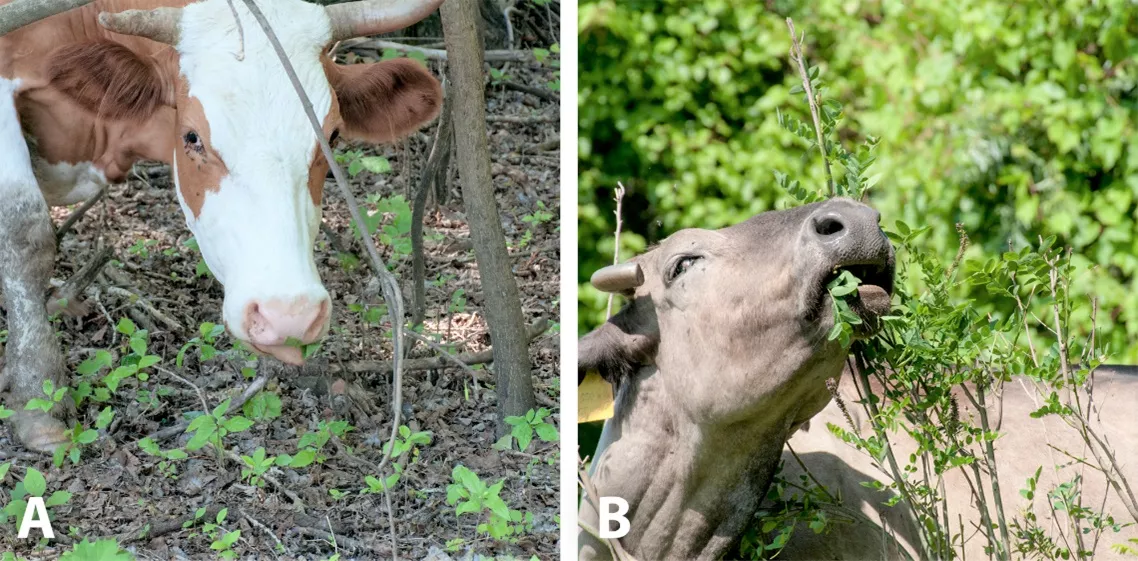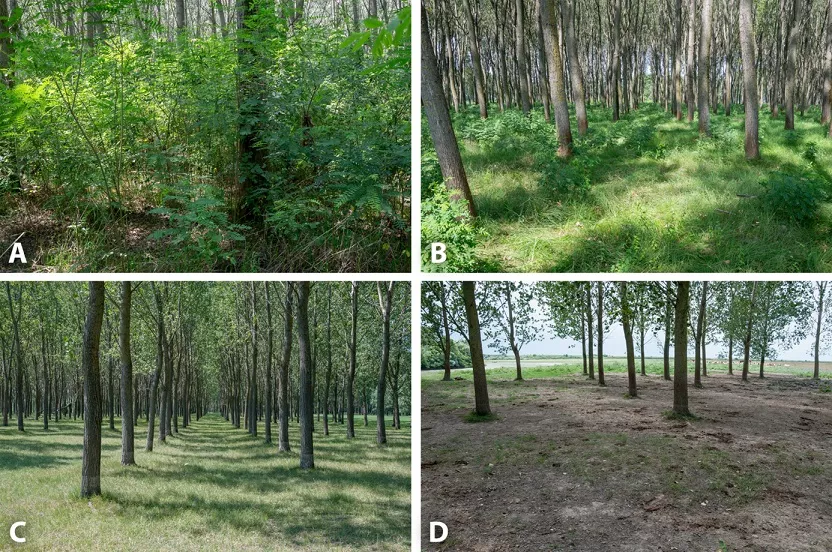The effect of cattle grazing in poplars on the quantity of invasive woody species, the species richness of the grassland level and the quantity of grazable grasses has been studied in research led by László Demeter, forest ecologist at the ELKH Centre for Ecological Research (CER), and Ábel Péter Molnár, PhD student at the Hungarian University of Agricultural and Life Sciences. The researchers' paper on the topic has been published in the prestigious Journal of Environmental Management.
Biological invasion is today one of the most significant causes of biodiversity loss and changes to the landscape. The aggressive spread of invasive plant species not only causes a decline in native biodiversity, but also has broader socio-ecological consequences. Many alien woody species settle and spread very efficiently in the floodplains of rivers, often forming dense, almost impenetrable stands. Under the dense, closed stands, most of the native plant species become extinct, no grassland remains, and in the event of flooding, the water only flows very slowly in the overgrown area, significantly increasing the risk of flooding.
In Hungary, but more broadly in most of the floodplains of the Carpathian Basin, these various, rapidly spreading alien plants pose a serious threat to biodiversity. One of the biggest challenges in conservation is to develop effective yet environmentally friendly strategies to prevent and control the spread of plants that make flooding more likely. Though grazing floodplains with domestic animals in combination with other technologies (e.g. mowing, pasture mowing) is one viable alternative, its exact effects are yet to be thoroughly documented. This shortcoming has been met by a study by the authors on the socio-ecological effects of grazing in floodplain noble poplars.
In Hungary, traditional forest grazing systems have almost completely disappeared. As a result, the researchers studied a Serbian section of the Timis River where false indigo bush (Amorpha fruticosa), green ash (Fraxinus pennsylvanica) and boxelder maple (Acer negundo) are found in the floodplain in poplar plantations, while traditional floodplain grazing also takes place.

Researchers have shown that in poplar stands where intensive grazing takes place, the number and abundance of non-native woody species is significantly lower, while grassland levels consisting of more species-rich marsh and meadow species are developing, with more food for cattle. The study also points out that traditional grazing in this landscape results in a 'win-win-win' situation, i.e. a triple benefit for society. On the one hand, the traditional floodplain grazing of local communities can be maintained, while, on the other, flooding is easier in shrub-free, grazed floodplain plantations, something which is also beneficial in terms of nature conservation, as grazing helps maintain biodiversity. In addition, grazing of poplars can also be a valuable practice for the forest manager, as it does not damage the stand with proper care, but the harvest is greatly facilitated by the lack of dense alien woody species.

On plantations of newcomer tree species, such as poplar or acacia, the amended Forest Act of 2017 already allows grazing with domestic animals in Hungary, thus removing a significant obstacle to the solution proposed by the researchers.